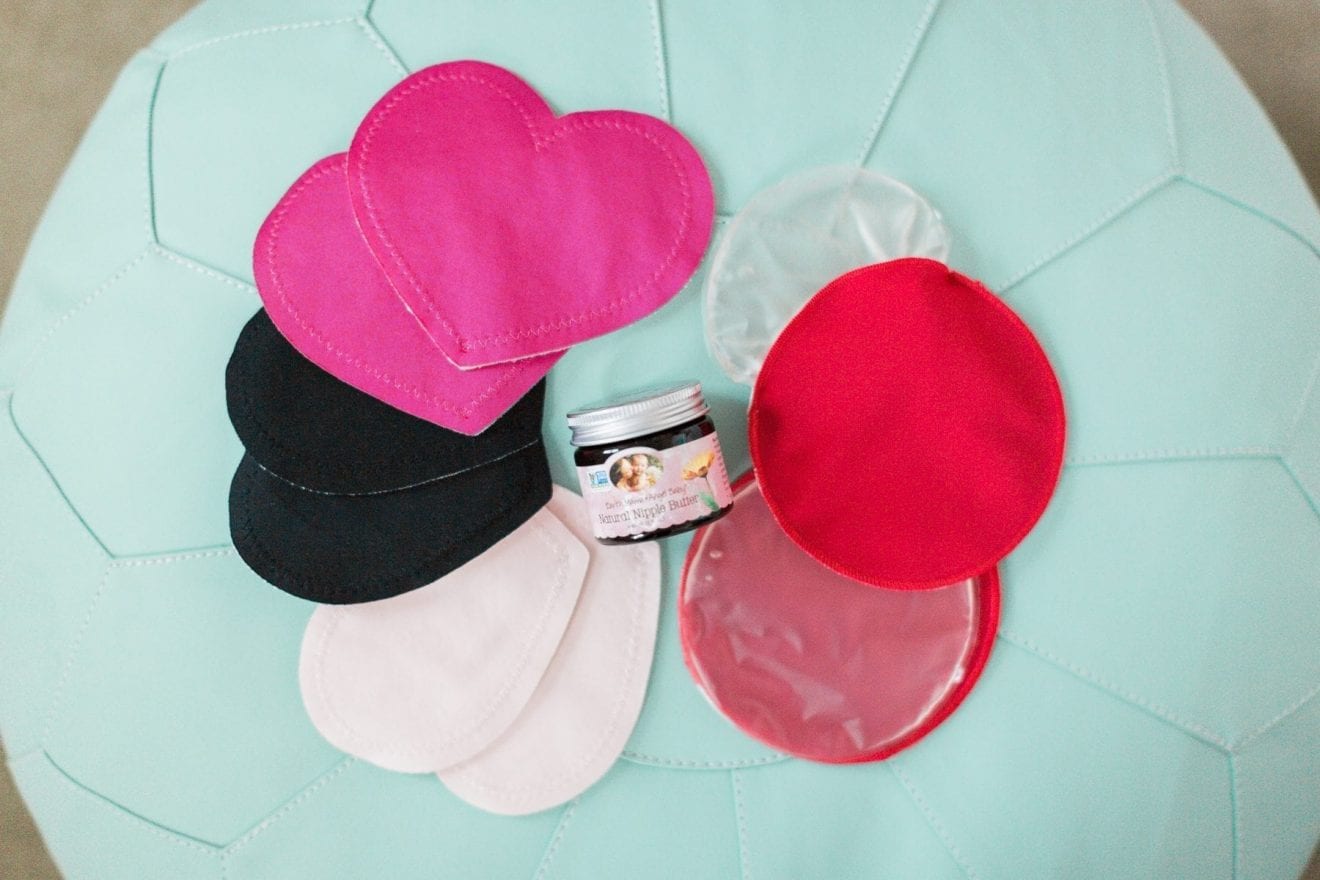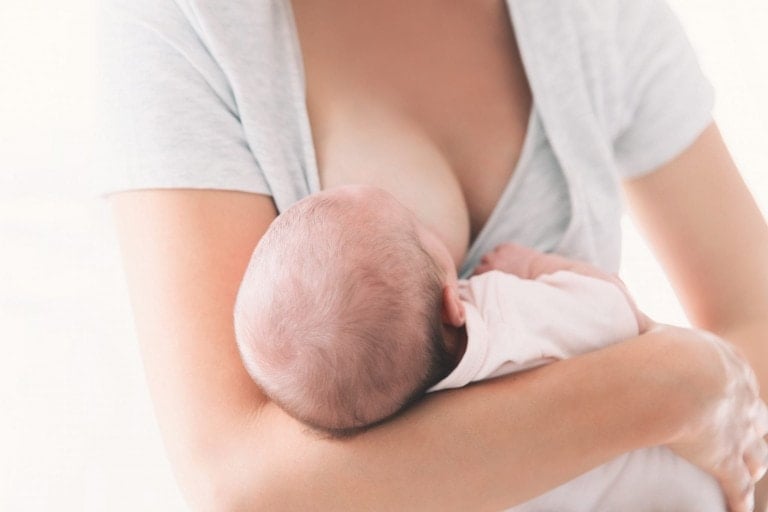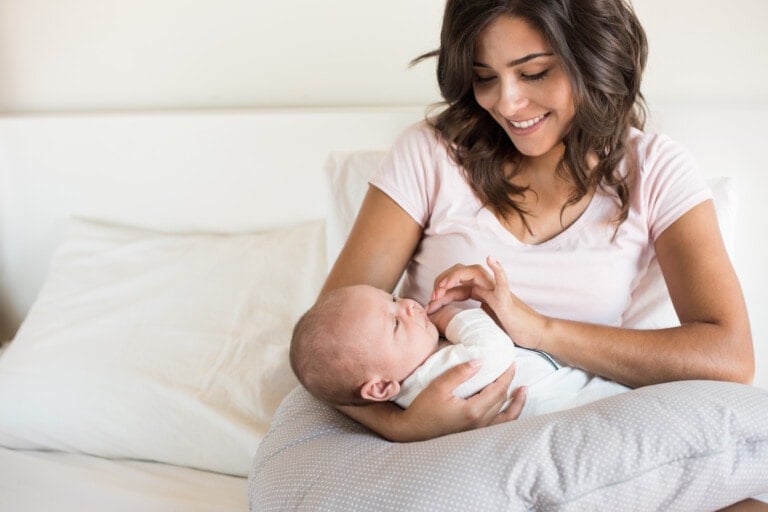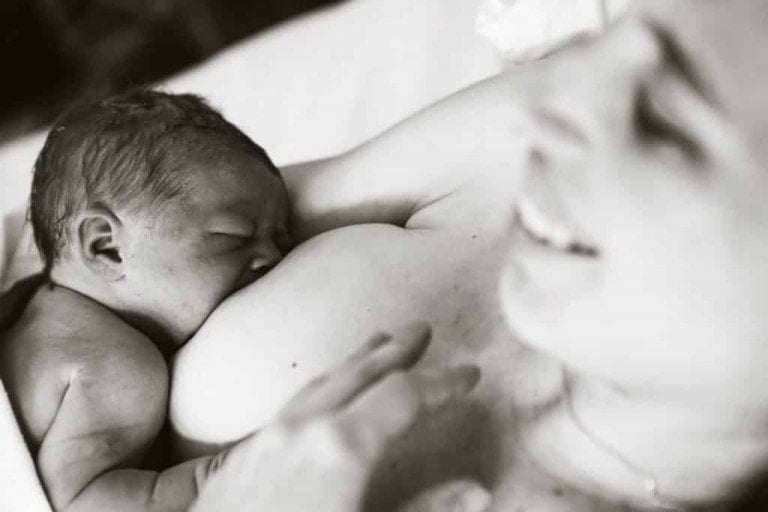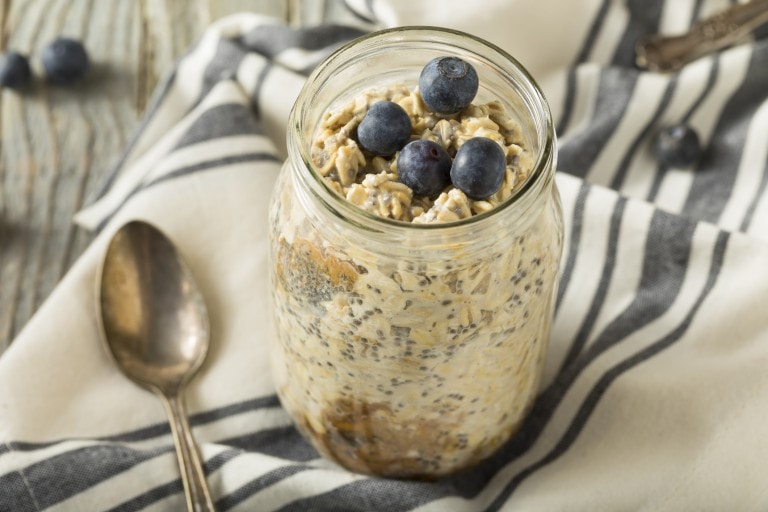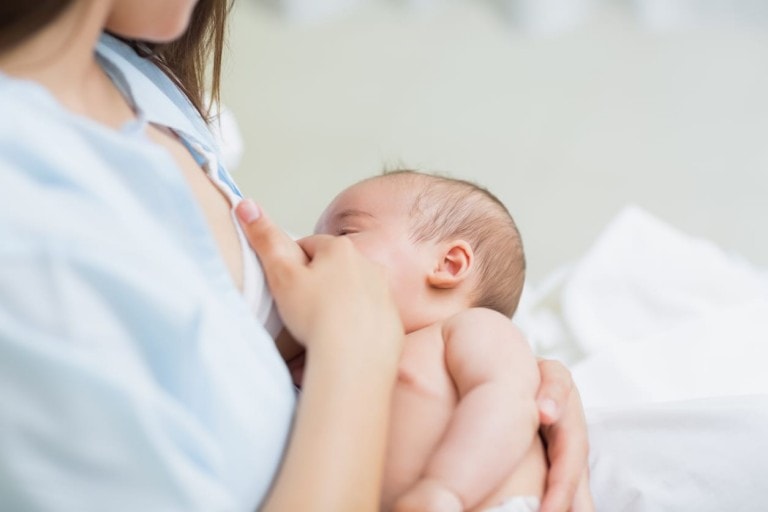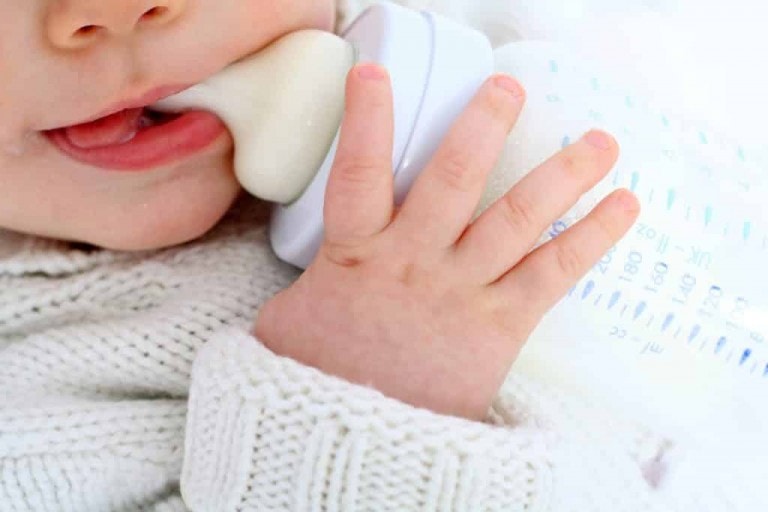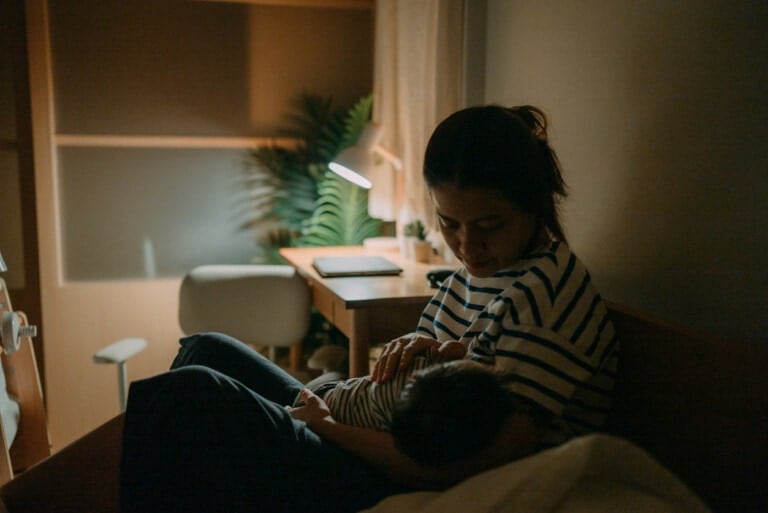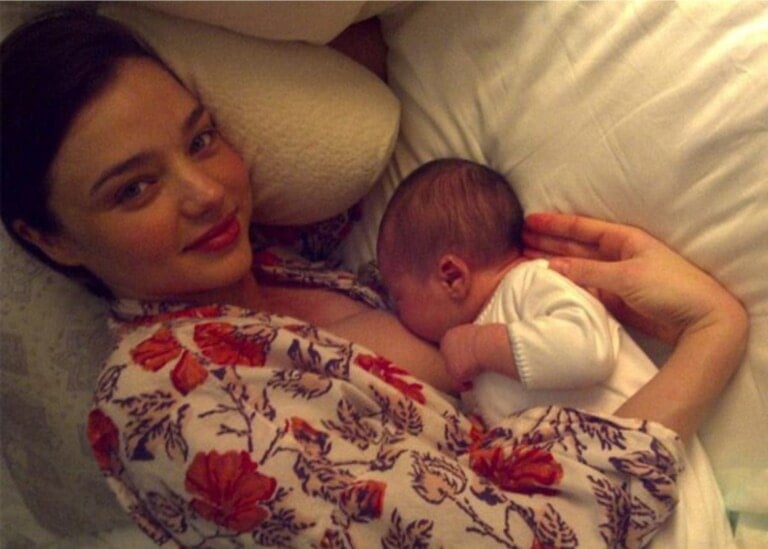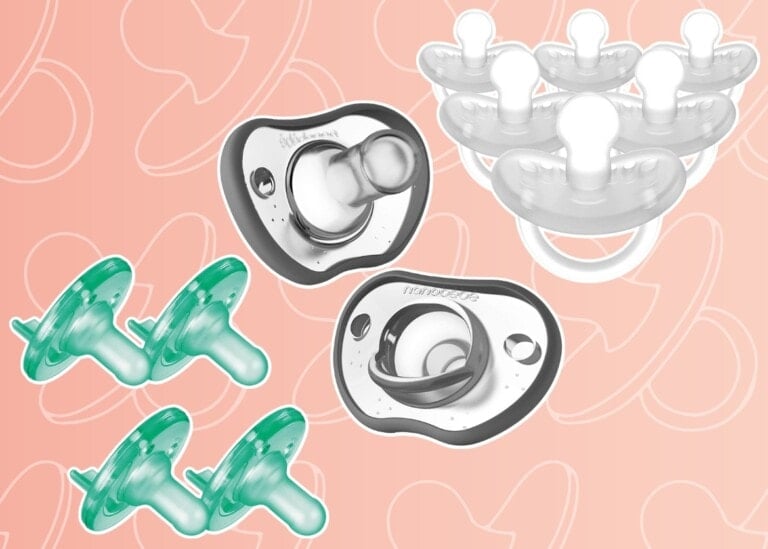Breastfeeding can be challenging. For some women and babies, it’s a skill that’s picked up easily, naturally, and quickly. But many mothers—if not the majority—don’t have that experience. There are a lot of tears and growing pains. Both literally and figuratively. Learning how to get a good latch takes time. I often tell my clients that the first two weeks are about building your milk supply and that it takes about 6 weeks to get over the major hurdles and feel more confident at breastfeeding.
If you’ve purchased some of my favorite breastfeeding essentials and you’re going through those obstacles learning this new skill, you may experience engorgement, a clogged milk duct, sore nipples, cracked nipples, bleeding nipples, or even mastitis. It can be a literal pain in the boob. And that is why I’m sharing 11 things that can help you through those breastfeeding aches and pains.
1. Good Nipple Butter
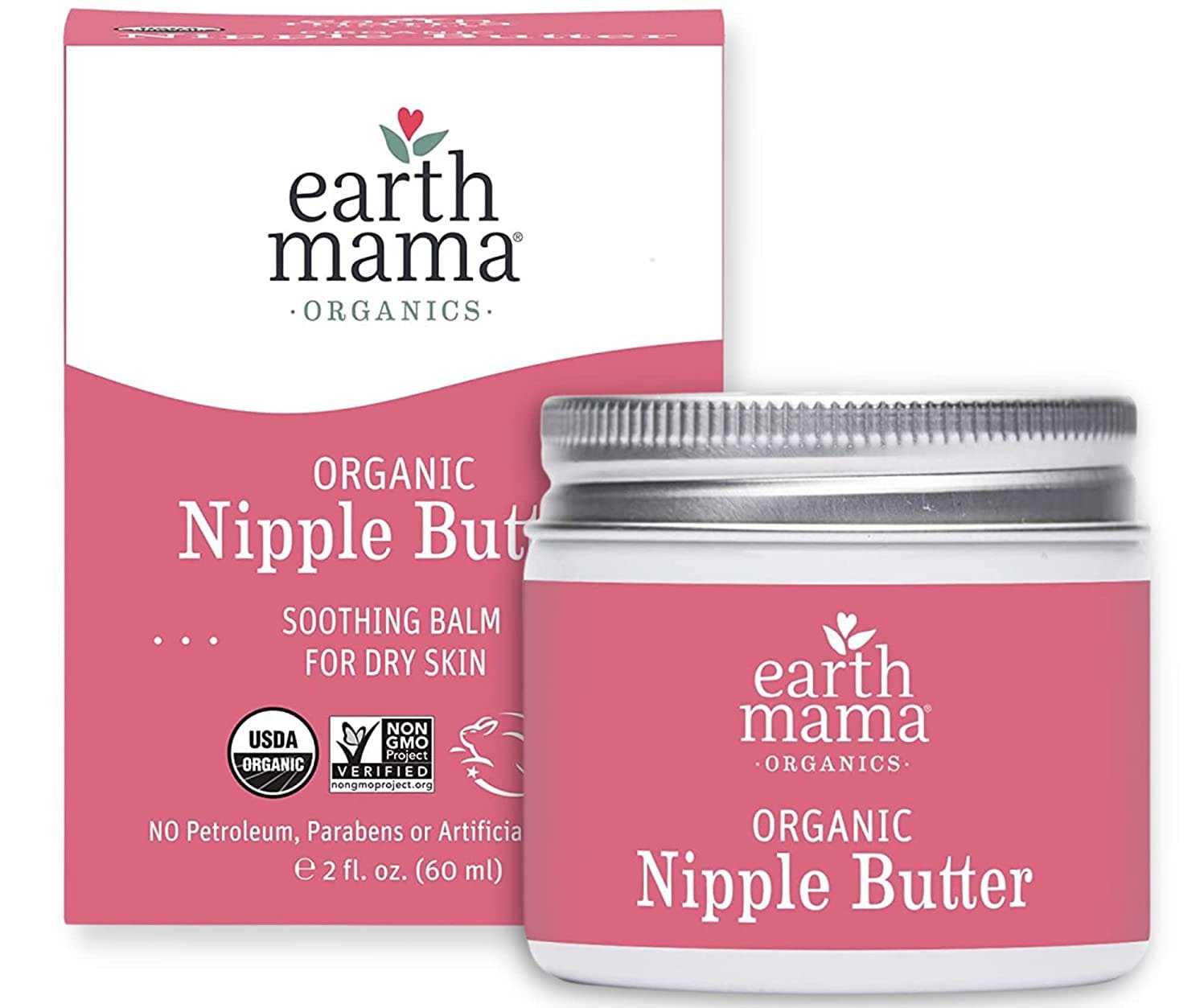
Did you know that our lips and nipples have the highest density of nerve endings of any area of the body? Crazy, right? Because they are sensitive and delicate areas, they require care. Think about it; if you lick your lips constantly and bite them every couple of hours throughout the day and night, more than likely, you will experience chapped lips. They will then crack and bleed and become very painful. This is why we wear chapstick to avoid lip irritation.
Now imagine all of that happening but with your nipples . . . Not fun. But that’s exactly what’s happening when you breastfeed. A tiny human is licking, sucking, pulling, and tugging on your nipples.
That’s why you need chapstick for your boobs, and getting a good nipple butter is the key to this solution. Earth Mama has a wonderful nipple butter that is great for mom and safe for baby. The perfect chapstick for your nipples. 😉 It’s made of only natural ingredients and is a brand we love and trust. Using this will help hydrate your nipples and avoid irritation and pain. You’ll thank me later.
2. Cooling Pads
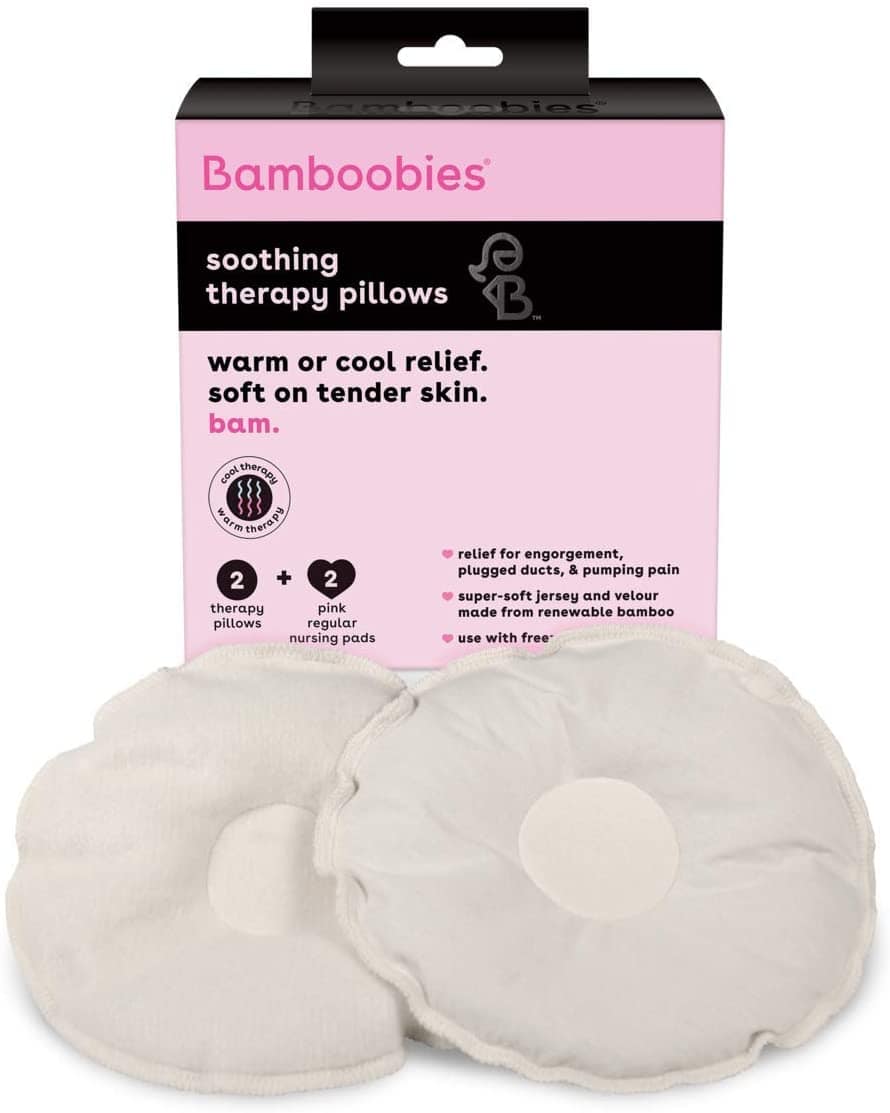
These things are the BEST! When you’re feeling engorged and your breasts are getting hard, sore, and downright painful, these Soothing Nursing Pillows from Bamboobies are amazing. They provide incredible relief. I love that they are reusable, can be cooled or warmed depending on your need, and can be worn with or without the sleeves on a clogged milk duct and/or engorged breasts. They have been a saving grace to so many mommas. They are a breastfeeding mom’s best friend!
I recommend using it as a hot compress for 5-10 minutes before nursing and then applying it as a cold compress for 10 minutes after feedings to help reduce swelling and inflammation if you are experiencing engorgement.
3. Hot Shower
For engorgement, take a warm shower and hand express enough milk so it no longer hurts. Don’t completely relieve and empty your breasts, though. Just expressing a little breast milk and reducing the pressure will help soften your breasts and ease discomfort. The warm water will help your breasts let down a bit.
4. Massage
As mentioned, while you’re taking a warm shower, gently massage and compress the breast (or breasts) to express some of the milk and diminish engorgement. Also, massage the breast when the baby pauses between sucks. This may help drain the breast more, leaving less milk behind.
5. Air Drying
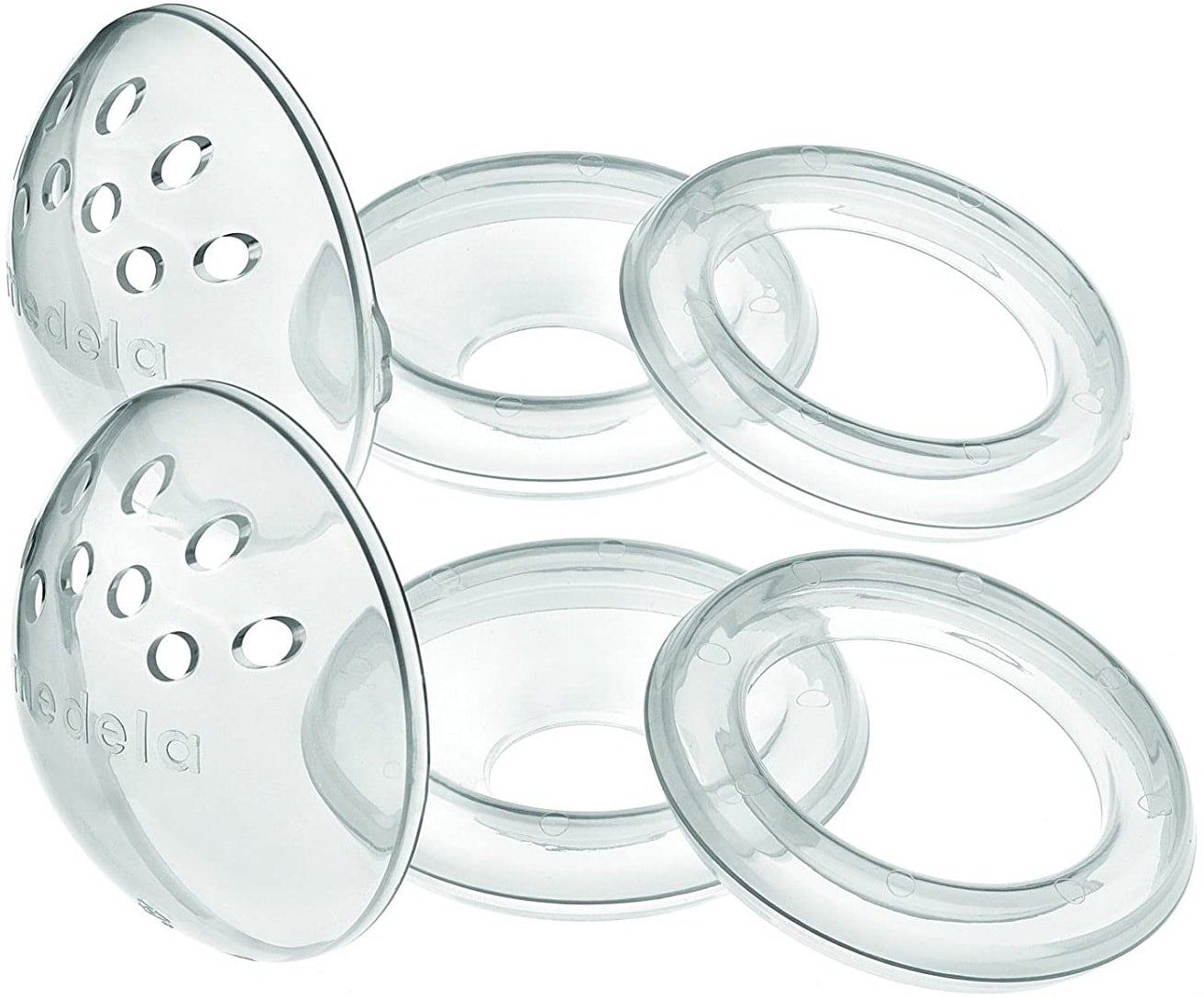
If your nipples are sore and feeling raw, you may find that anything touching them makes them hurt even more. To help with this, you can use breast shells to protect them from being touched by your bra or t-shirt. But something that can help even more is letting them air dry. As much as possible, expose your nipples to the air so they will stay dry and heal. This is one of the best things that you can do for healing.
6. Check for Tongue Tie and Lip Tie
Tongue-tie and lip tie can be tough to diagnose. If your baby has difficulty lifting their tongue or moving it forward, you should speak with a pediatric dentist to see if they have either of these issues. These are pretty simple to fix and can help your baby get a better latch, causing less irritation to your nipples while breastfeeding.
7. Breastmilk
If you meet a breastfeeding mama, you’ll quickly discover that breast milk is the cure-all for all things. You’ll often hear, “Just put a little breastmilk on it.” Clogged tear duct, ear infection, you name it. Some mamas think it’s the answer to curing it all. And one of those things is also sore/cracked nipples. Express some of your breastmilk, rub it around your nipples and let them air dry. Do that after every feeding, and you should soon notice a difference.
8. Breathable Nursing Pads

If your nipples have cracked and are bleeding, you will want to gently wash your nipples after each feeding so you can reduce the chance of infection. Once a day, use a gentle soap to clean them. After each feeding, use the nipple butter and a good nursing pad that is breathable to keep your nipples from rubbing or touching other things, such as your shirt. We don’t want your nipples to stay damp, so change your nursing pads once they become damp. This is why I recommend Bamboobies nursing pads. Their reusable and disposable nursing pads are breathable and are our favorites. Your breasts will be so happy with these.
9. Breast Pump
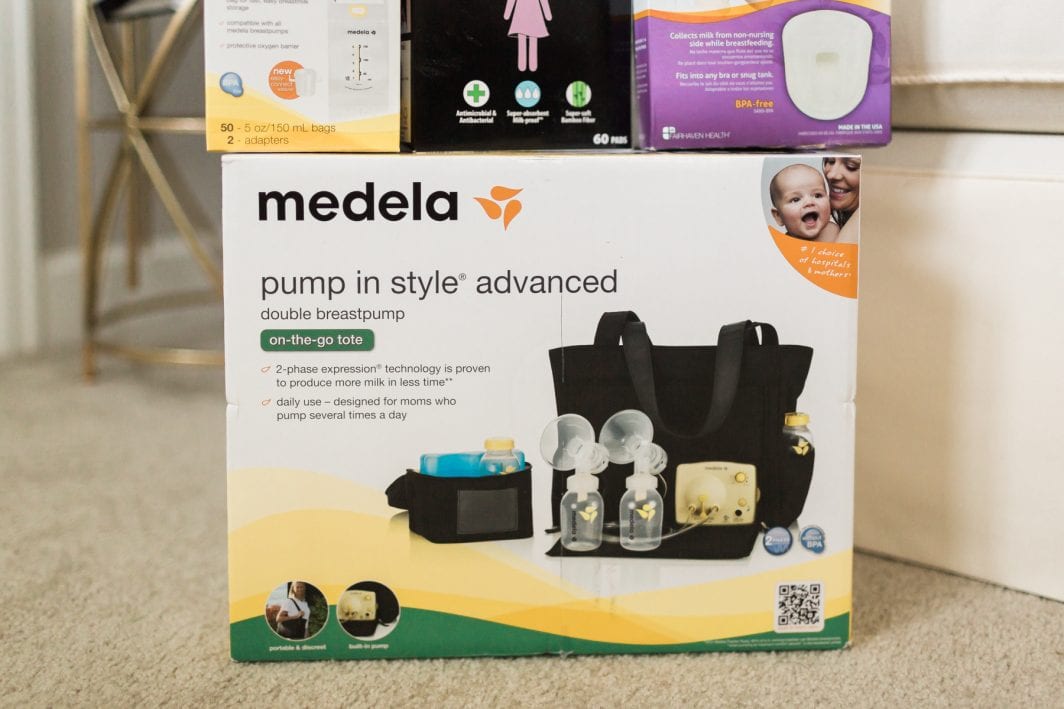
If massaging or hand expressing isn’t doing the trick, briefly use your breast pump to help soften your breast to allow baby to get a better latch. When your breasts are rock solid, it can be difficult for baby to grab ahold of your nipples and areola to breastfeed. Your pump can help.
10. Nipple Shield
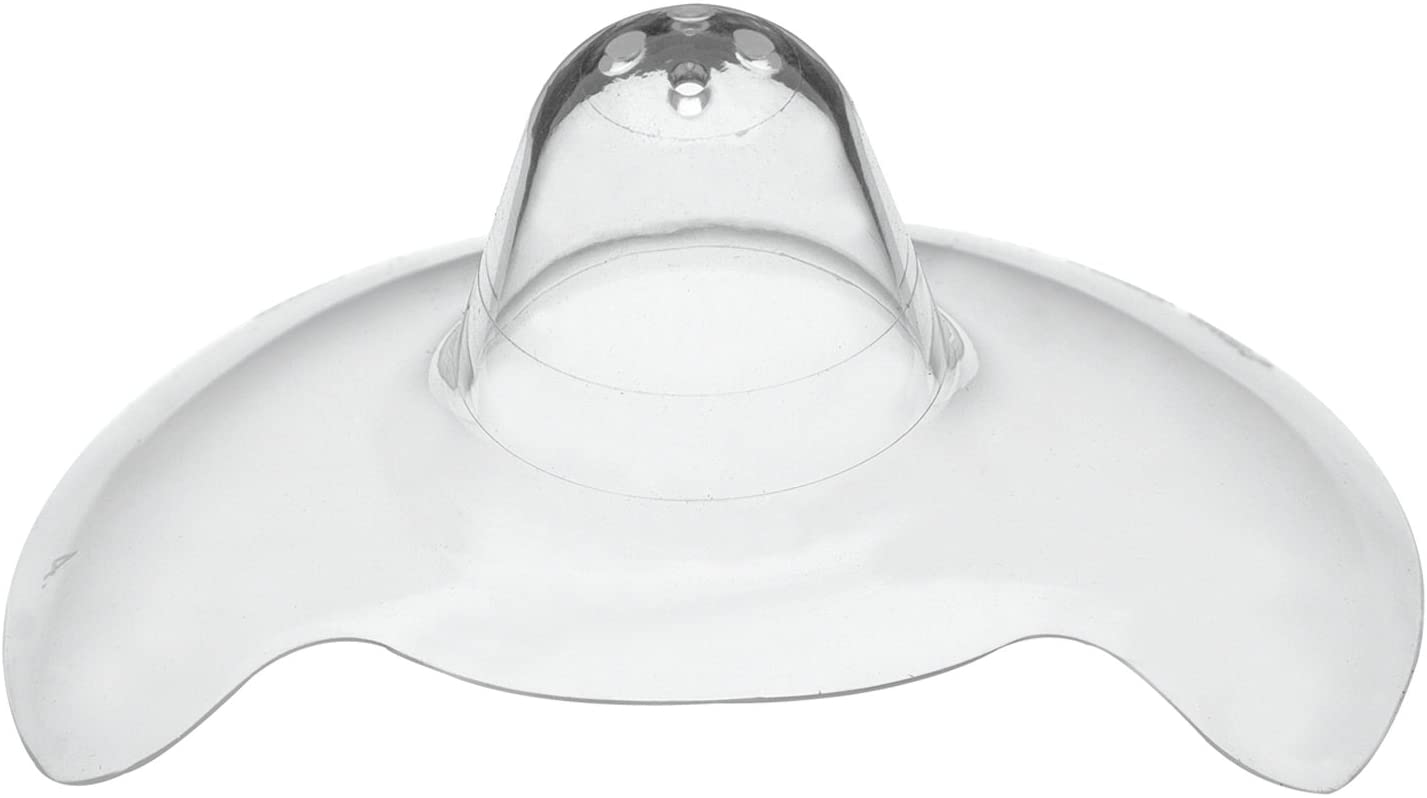
Nipple shields aren’t typically my first recommendation. They can sometimes cause more problems than solve. Some babies can become dependent on them and refuse to nurse without them, which can be frustrating for mom. If the other things above haven’t worked, it may be worth trying. We recommend only using it when necessary to give your nipples a break.
11. Lactation Consultant
Many people think that it’s normal for breastfeeding to be painful. It can be, but there are things that you can do to avoid that. If these tips haven’t helped you resolve the problem you are experiencing, I recommend speaking with an International Board Certified Lactation Consultant, IBCLC (breastfeeding expert). They can help you with the issues you are experiencing and give you suggestions on resolving them.
Often a mother with sore or cracked nipples will have more than one problem. A poor latch, clogged milk duct, engorgement, developed a bacterial infection, etc. So you may have to work through each one with a lactation consultant before the feedings become pain-free. But you can get through it, and it will get better! You just have to keep trying and ask for help when needed.













